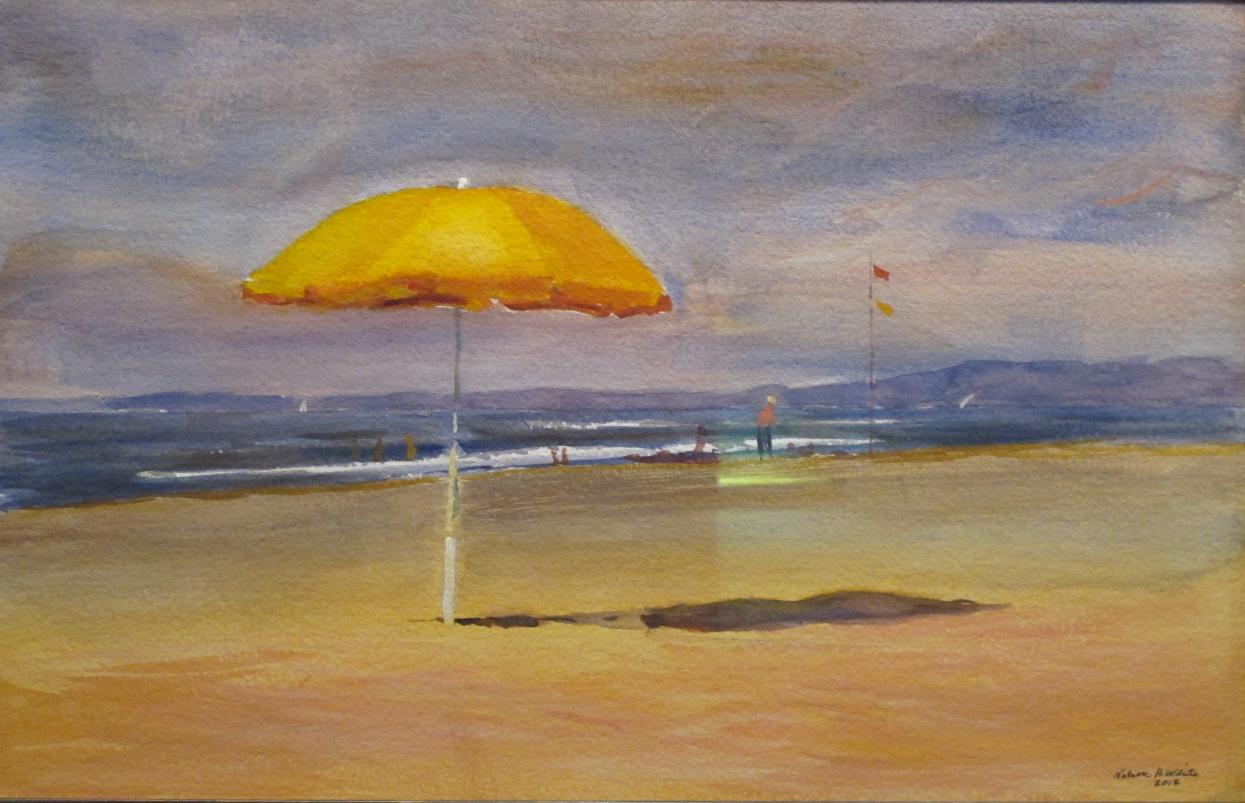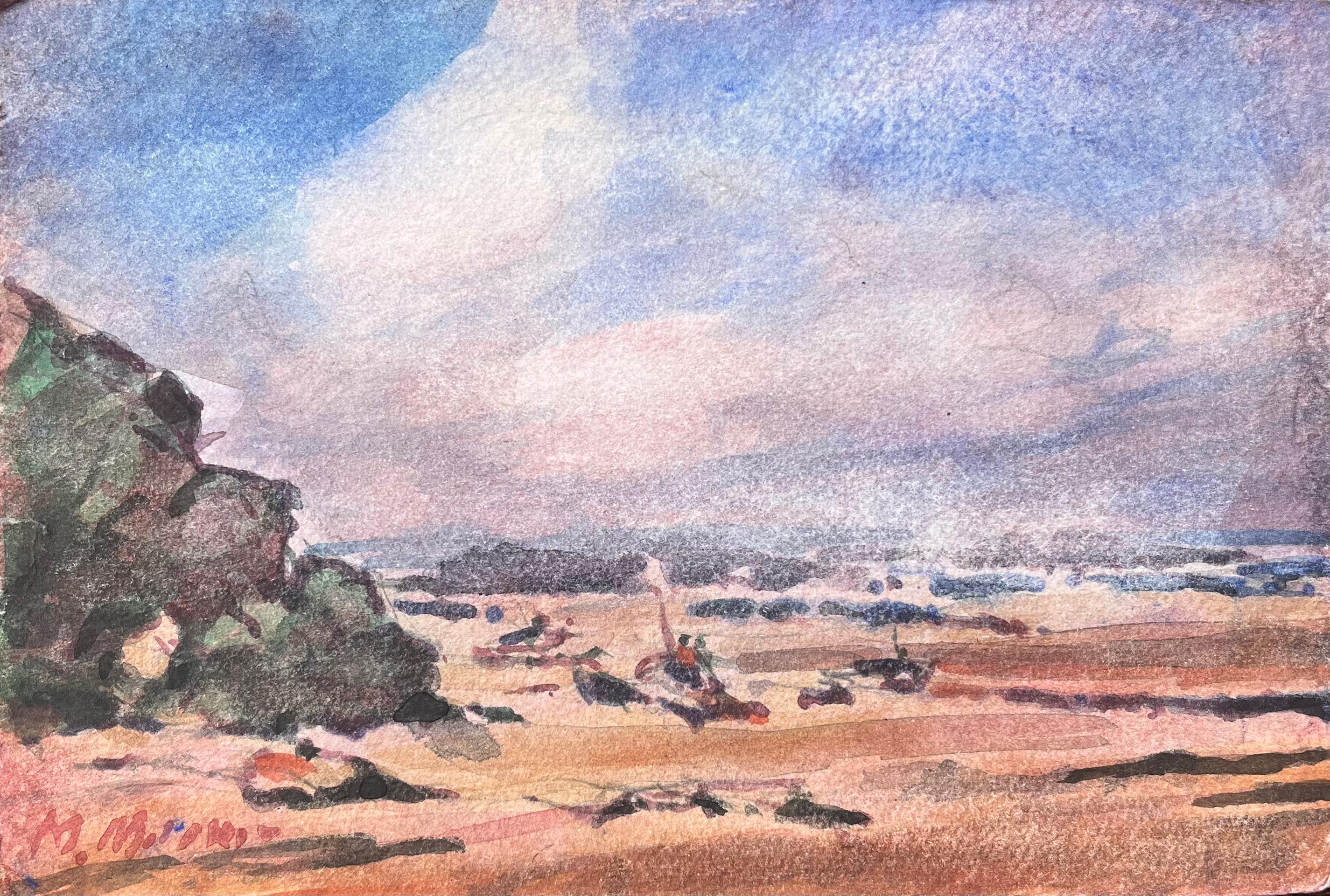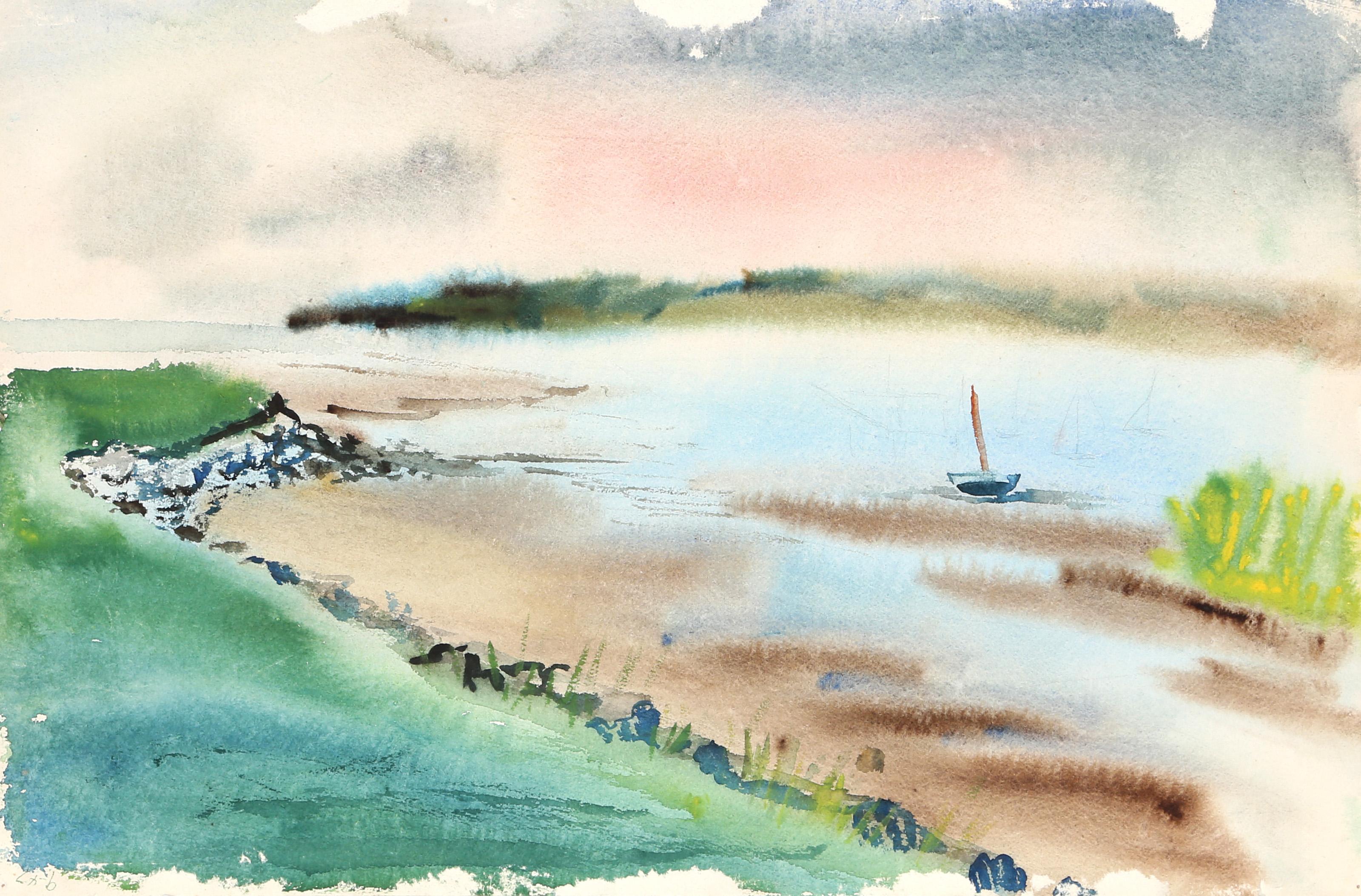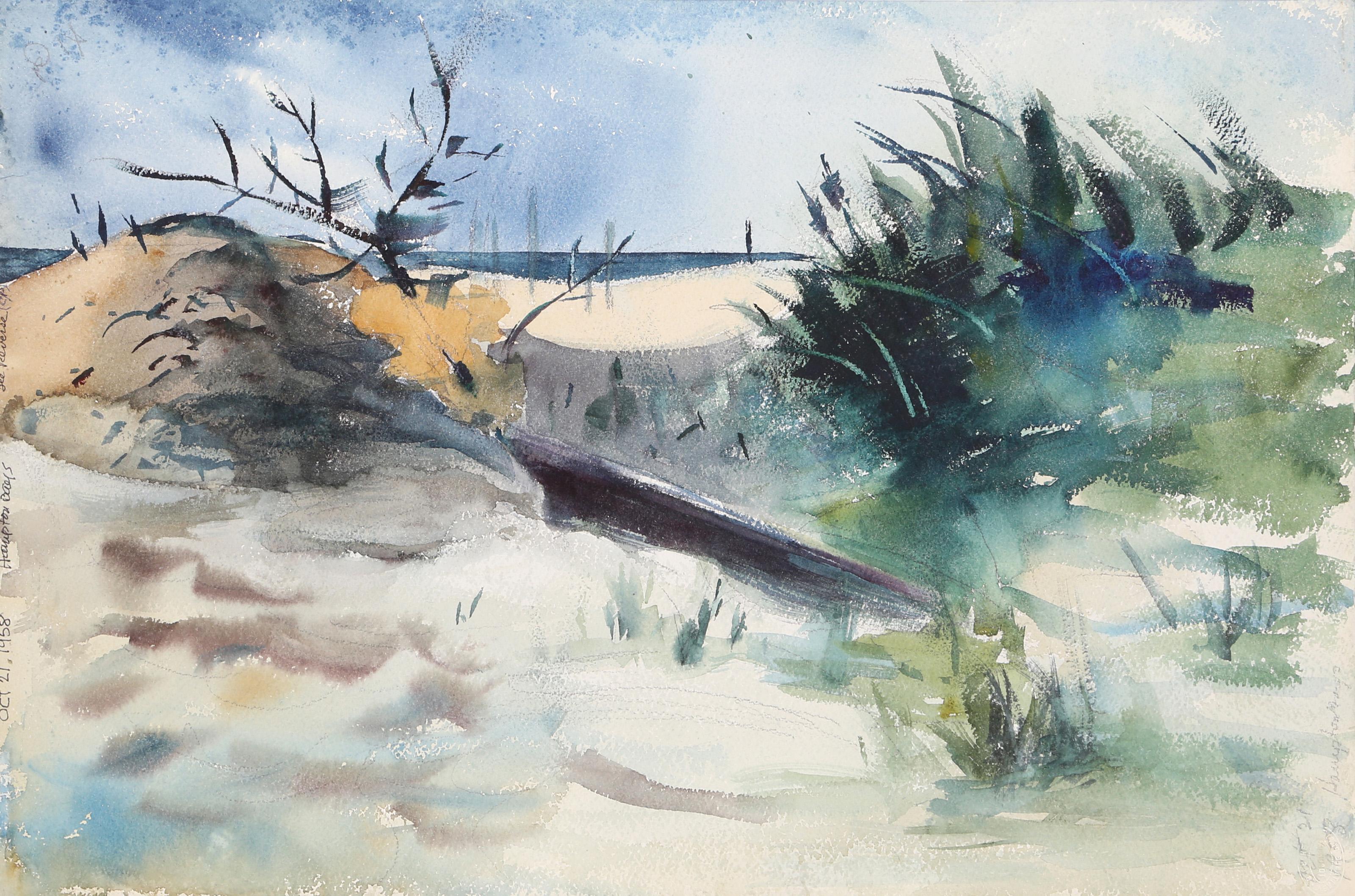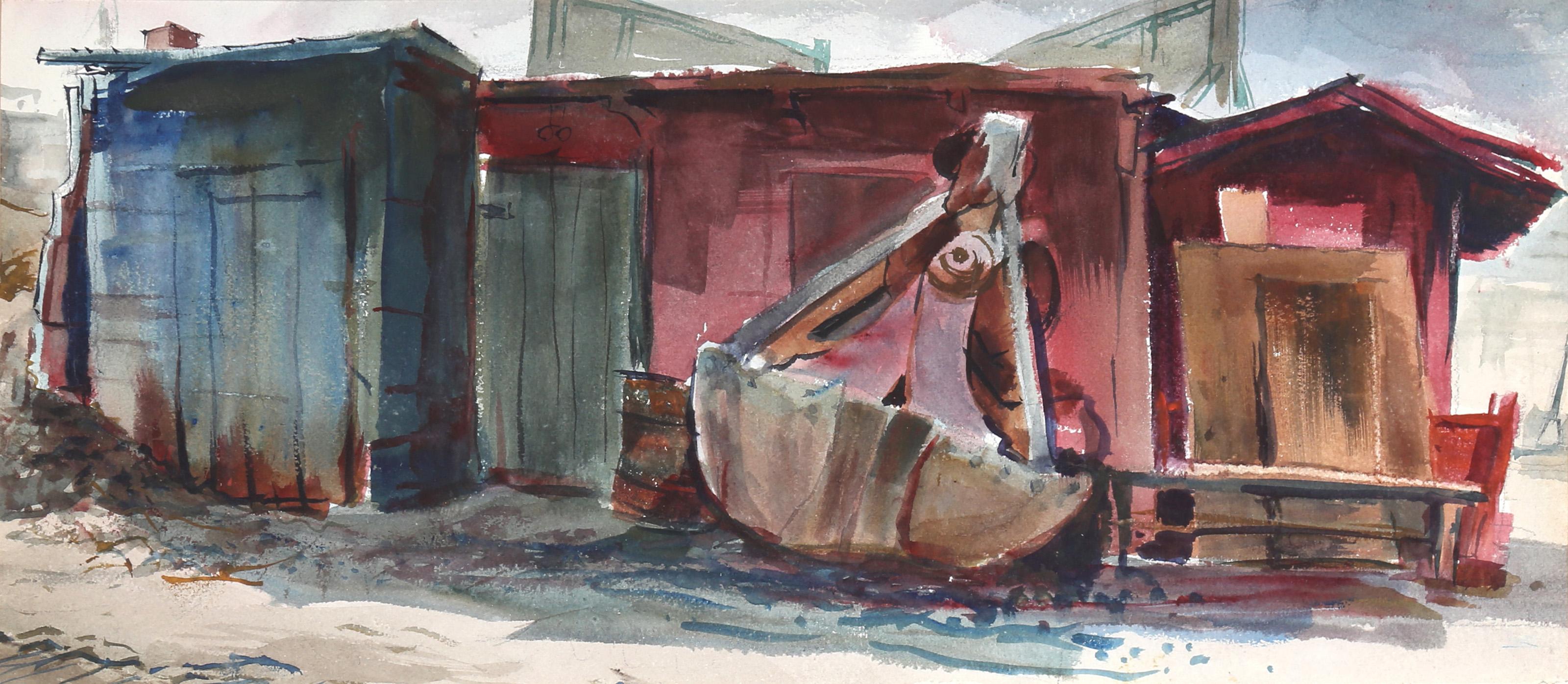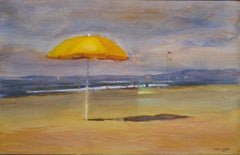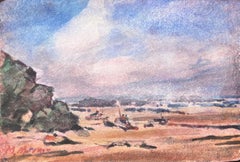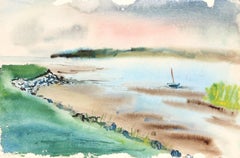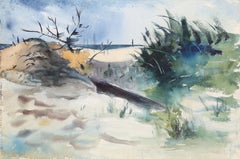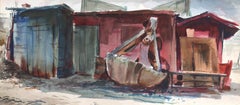Nelson H. White"Viareggio, Italy" Impressionist, Landscape, Watercolor painting, framed2012
2012
About the Item
- Creator:Nelson H. White (1932, American)
- Creation Year:2012
- Dimensions:Height: 4 in (10.16 cm)Width: 11 in (27.94 cm)
- Medium:
- Movement & Style:
- Period:
- Condition:
- Gallery Location:Sag Harbor, NY
- Reference Number:Seller: WHI-0031701stDibs: LU389314662312
Nelson H. White
Nelson H. White was born in New London, Connecticut, in 1932. White has been surrounded by art and artists from the time he was born. He received his earliest art instruction from his grandfather, Henry Cooke White (1861–1952) and his father Nelson Cooke White (1900–89), both important American artists. The family lived in Waterford, Connecticut, and the elder White had been an early member of the art colony in Old Lyme, Connecticut. Known for his paintings of the Connecticut landscape and shoreline, Henry became a teacher to his son, Nelson. Living with his parents at the Florence Griswold House in Old Lyme, he met some of the most important and influential artists of the day, Childe Hassam, Will Howe Foote and Harry Hoffman. Later, Nelson White's father began to take his family to summer on Shelter Island and became friendly with many of the artists of the Peconic Colony such as Irving R. Wiles, an important American Impressionist. After graduating from the Tabor Academy in Marion, Massachusetts, in 1951, Nelson H. White began to study at Mitchell College in Connecticut but left to pursue studies in the violin, musical theory and composition. At this time, he began to spend more time studying art with his father and grandfather. By 1955, White had decided to devote himself to a career as a painter and traveled to Florence, Italy, to become an apprentice to Pietro Annigoni, the world-renowned Florentine master. Within two years, the young White had won two awards for his work. While in Florence, he also studied with the great Italian teacher, Nerina Simi. Today, White divides his time between the United States and Florence. Although he has received instruction from some very important artists, White's work is highly individual. He paints with great spirit. Upon seeing his work one quickly senses White’s great love for nature and the outdoors. Through his eyes, we can view and interpret nature in an intimate manner. Whether White is painting the Connecticut shore, a beach in Italy, a pond on Shelter Island or the hills of Vermont, he allows the observer to view a soft, yet dramatic side of nature. His ability to use color, coupled with rich brushwork and graduation of light, air and atmosphere allows one to enjoy a certain mood which is conveyed in White's paintings. It is a mood that leaves us with a lasting impression. White has shown his work in numerous galleries across the globe since the 1950s, from the United States to Italy and Russia. White's first museum retrospective was in the New Britain Museum of American Art in July 2012. His work can be found in many private and public collections, as well as several museums.
- ShippingRetrieving quote...Shipping from: Sag Harbor, NY
- Return Policy
More From This Seller
View All21st Century and Contemporary American Impressionist Landscape Paintings
Oil, Panel
21st Century and Contemporary Impressionist Landscape Paintings
Oil
2010s Impressionist Landscape Paintings
Oil, Panel
2010s Impressionist Landscape Paintings
Oil, Panel
21st Century and Contemporary Impressionist Landscape Paintings
Oil
21st Century and Contemporary Impressionist Landscape Paintings
Oil, Panel
You May Also Like
20th Century Impressionist Drawings and Watercolor Paintings
Watercolor
1940s Impressionist Landscape Drawings and Watercolors
Watercolor
1950s Impressionist Landscape Drawings and Watercolors
Watercolor
1960s Impressionist Landscape Drawings and Watercolors
Watercolor
20th Century Impressionist Drawings and Watercolor Paintings
Watercolor
20th Century Impressionist Drawings and Watercolor Paintings
Watercolor
